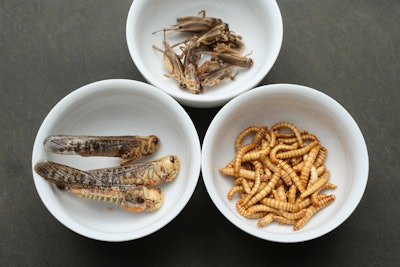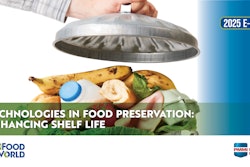As the global population grows, sustainable sourcing and processing of food continues to be of utmost importance. One growing sector impacting the future of food processing is the edible insects market, which projects to reach approximately $28.54 billion by 2035, according to the 2025 Edible Inspects Market report by Meticulous Research.
The valuation represents a projected increase of over $20 billion within the next 10 years, given 2025’s $2.4 billion estimate.
Some food manufacturers have already taken note of the sector’s promise. In 2023, Tyson Foods announced its investment purchase in Protix, a manufacturer and supplier of insect feed.
Those looking to expand or break into insect processing may find it helpful to have a reference of prominent processes to use in operations amid continued market growth. In “Processing insects for use in the food and feed industry” from the Current Opinion in Insect Science journal, author and Purdue University Professor of Food Science Andrea Liceaga lays out six overarching techniques that can be applied in edible insect processing operations.
Liceaga highlights that insects are more likely to be eaten if they are processed into non-recognizable forms. As such, she stresses the use of “commercial processing methods that will render the protein suitable for food/feed formulation, while maintaining the safety, nutritional and sensory quality of the final product.”
Grinding for protein extraction
Liceaga states that grinding insects into powder form makes it easier to extract nutrients such as protein. To accomplish this, whole insects can first be dehydrated or roasted followed by grinding into a fine flour-like form.
Yet, the techno-functional properties of such flours, such as emulsification, foaming, and solubility can be limited due to chitin-protein interactions, Liceaga explains. Thus, methods such as defatting, protein solubilization and recovery, purification, and drying help the proteins become more applicable to food formulations.
Oil extraction via solvent use, pressing, ‘TPP’, and oxidation
Extracting oils from edible insects is critical to obtain high yield of quality food/feed oil and facilitate protein isolation, Liceaga states. To extract them, processors can use what Liceaga describes as “environmentally friendly, food-grade” solvents such as methanol and ethanol.
Two other methods include using a mechanical press, used in chia seed and canary seed processing, and three-phase partitioning (TPP), which uses water, tert-butanol, and ammonium sulfate. Liceaga notes the latter method has been applied to oil extraction of soybeans, seed kernels, and rice bran.
Thermal processing and drying
Another important step in insect processing includes inactivating enzymes that degrade or spoil the product. Liceaga touches on thermal processing techniques that accomplish this inactivation.
Blanching, or using water/steam, is effective and can also decrease microbial loads. Pasteurization is another method Liceaga cites that performs the same duties.
Moreover, drying can inactivate enzymes and eliminate bacteria. Liceaga states that commercial dehydration methods such as roasting (at roughly 150°C for a few minutes) and air/oven drying (at 60°C to 80°C for 24 to 48 hours) are widely used to process edible insects.
Low-temperature processing
Extending the shelf life of insect products goes hand in hand with spoilage prevention, prompting the use of low-temperature processes such as freezing and refrigeration. These processes carry the advantage of not significantly altering appearance and sensory qualities of products, Liceaga states.
Freezing can extend a product’s shelf life by months or years, depending on its properties, while refrigerating can extend life for a few days or a couple of weeks.
Fermentation
Lastly, Liceaga captures the promise of fermentation in edible insect processing by noting the “appealing sensory characteristics and enhanced nutritional quality” the process generates.
In commercial fermentation, a specific microbial culture is used to ferment macromolecules into "desirable metabolites,” Liceaga explains, which can include free fatty acids, amino acids, alcohol, aroma and flavor compounds, and vitamins.
Liceaga refers to reports that suggest fermented insect sauces have had “acceptable” sensory properties and have shown value as possible alternatives for umami-style products like soy sauce.



















